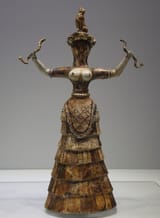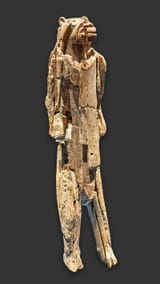Anonymous
7/3/2025, 7:46:36 PM No.40652938
We know they had a capacity for ritual, from their burial practices, and they do seem to have had made artwork in some forms, as well as the flute that was found once before, and most of the early signs of religious behaviour and symbolism appear in the Middle Paleolithic.
While we obviously have no writing from that period, we have been able to make educated guesses about what Homo Sapiens of that time may have believed from comparative methods and reconstructions. So while we can never know for sure, we have something to work with. The Neanderthal case is much more sparse, but may well have been some similar animistic system for all we know.
What gets my curiosity, however, is not just the archaeological questions but the spiritual ones. Would the gods and spirits they venerated just be the same as us, just by other names? Or could they have had their own deities whose names have been lost to time? If so, could they still be contacted in some way? Or are they beyond us? And really, is there any way to know any of this for sure at all?
While we obviously have no writing from that period, we have been able to make educated guesses about what Homo Sapiens of that time may have believed from comparative methods and reconstructions. So while we can never know for sure, we have something to work with. The Neanderthal case is much more sparse, but may well have been some similar animistic system for all we know.
What gets my curiosity, however, is not just the archaeological questions but the spiritual ones. Would the gods and spirits they venerated just be the same as us, just by other names? Or could they have had their own deities whose names have been lost to time? If so, could they still be contacted in some way? Or are they beyond us? And really, is there any way to know any of this for sure at all?
Replies:



